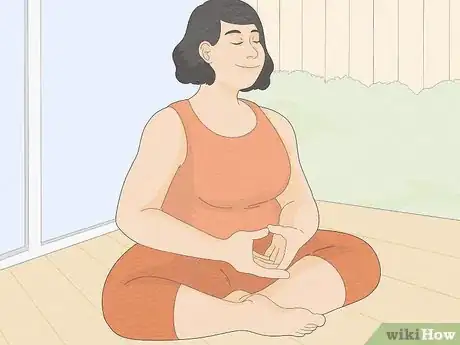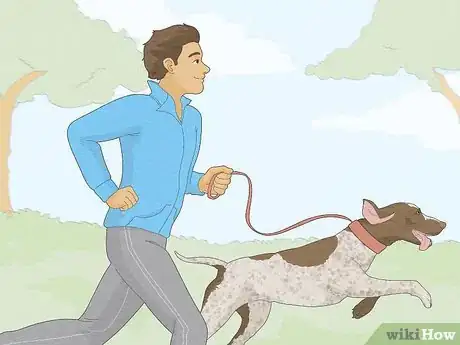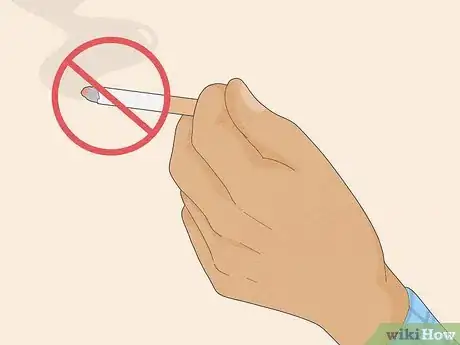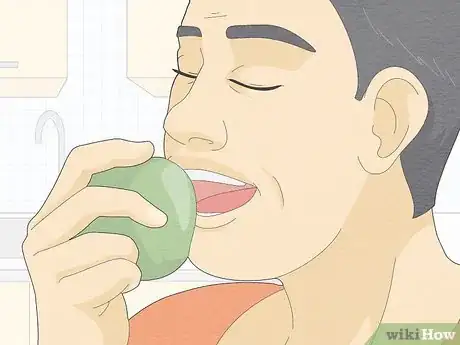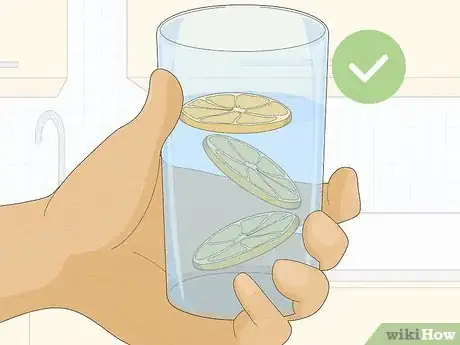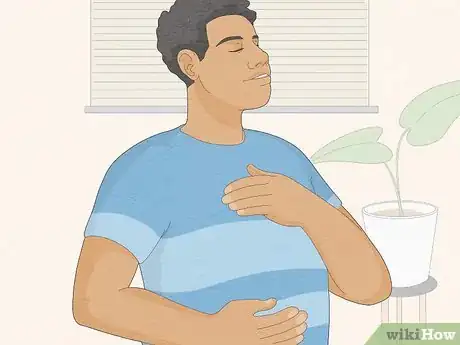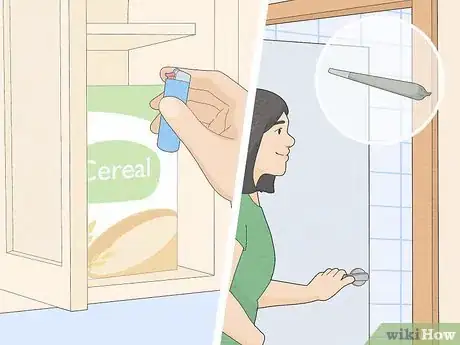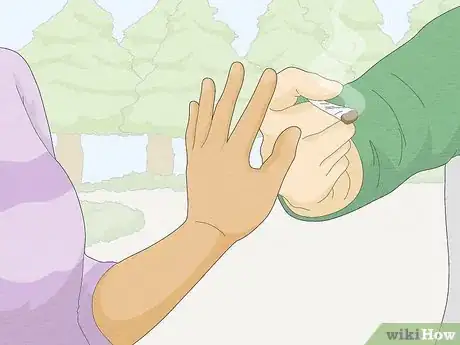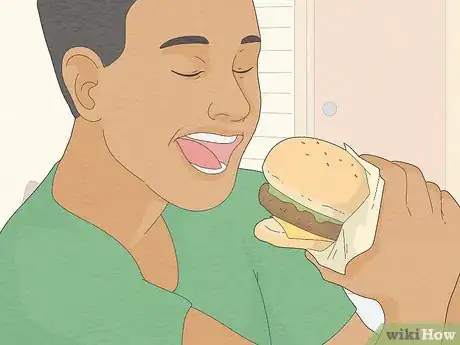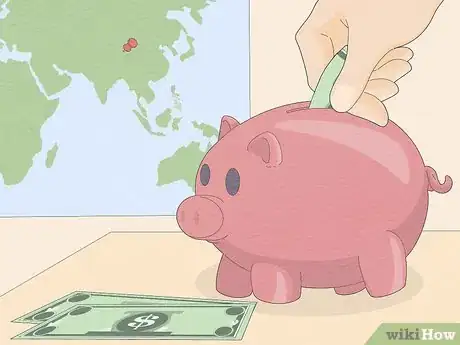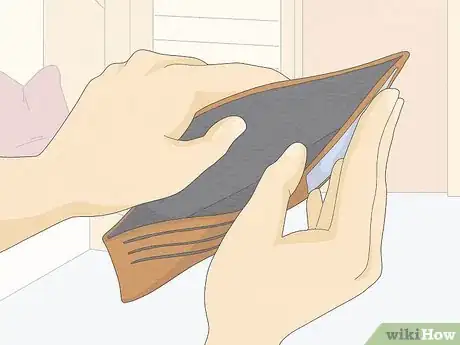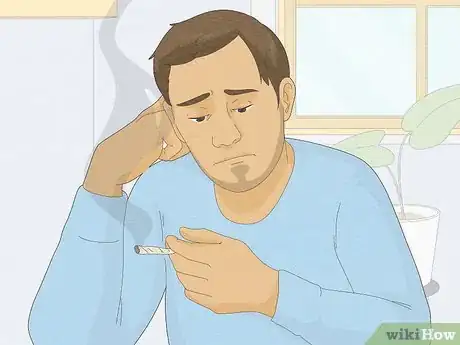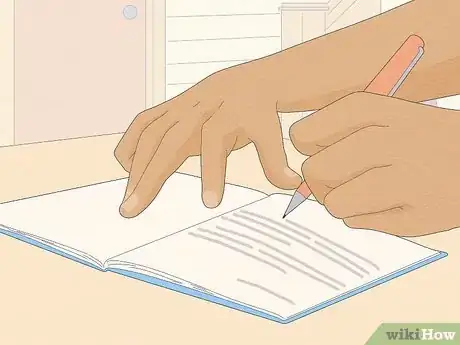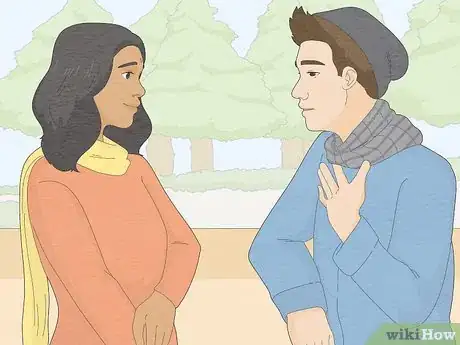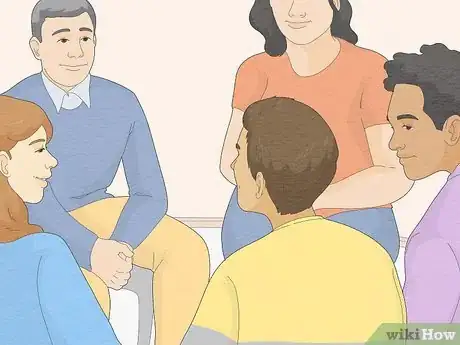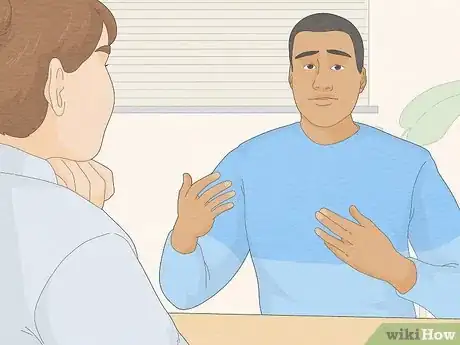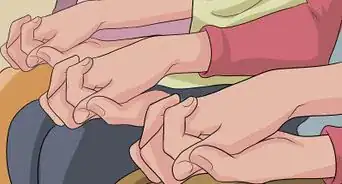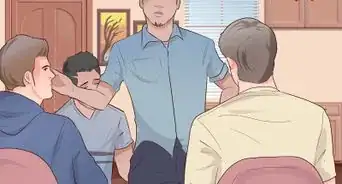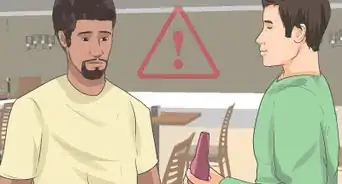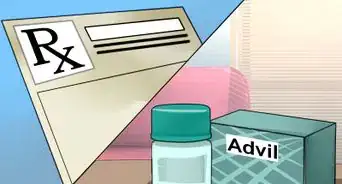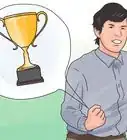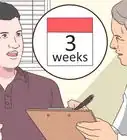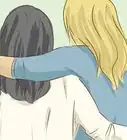This article was co-authored by Trudi Griffin, LPC, MS. Trudi Griffin is a Licensed Professional Counselor in Wisconsin specializing in Addictions and Mental Health. She provides therapy to people who struggle with addictions, mental health, and trauma in community health settings and private practice. She received her MS in Clinical Mental Health Counseling from Marquette University in 2011.
There are 7 references cited in this article, which can be found at the bottom of the page.
This article has been viewed 93,343 times.
There are many reasons people choose to cut down on or quit using marijuana. For some it is a legal or career reason; for others cost, health, or general lifestyle changes are the primary reasons. Regardless, with determination and support, there are ways that you can successfully cut back or stop your marijuana use.
Steps
Changing Your Habits
-
1Create a new morning routine. Starting the morning without marijuana reduces your amount and frequency of marijuana use each day and sets the tone for the rest of the day.[1] If you are used to “wake and bake” (smoking marijuana first thing in the morning), then find something else positive to do when you first wake up like stretching, meditation, etc.
-
2Do something active. Although they are mild compared to some other drugs, you may experience withdrawal symptoms that exercise can help alleviate.[2] Additionally, physical activity improves your health and well-being in general and may help you address some of the reasons you use marijuana.Advertisement
-
3Cut back on nicotine. If you also smoke cigarettes or mix your marijuana with tobacco, then strongly consider quitting.[3] Not only does tobacco greatly increase your health risks, but it may serve as a signal to your brain that it is time for marijuana, also. If needed, talk to your doctor about the best way for you to cut back on your nicotine use.
-
4Eat healthy snacks and meals. Eat lots of fruits, vegetables, and foods that are high in protein.[4] Eating foods that boost your immune system, provide you with energy, etc. can help you feel better in general, as well as reduce any withdrawal symptoms you might feel.
-
5Watch what you drink. In particular, monitor your alcohol and caffeine intake. Be aware of how much of both you are consuming and try to make an effort to decrease it.
- Some people increase their use of alcohol when they cut back or quit marijuana.[5] Make sure you aren’t starting to drink more, as this can lead to alcohol dependency and its related problems.
- Drink less coffee. The THC in cannabis can lessen the effects of caffeine on your body.[6] So, while you were using more marijuana you probably needed more caffeine. Now that you are using less marijuana, the same amount of coffee can have negative effects on you (nausea, jitters, insomnia, etc.).
- Instead, try to drink lemon or lime water, which have detoxing effects on the liver.
-
6Do some deep breathing. Not only will it help calm an anxiety you may be feeling, but it will also improve your lung function. A few times a day, practice taking a few deep, slow breaths in through your nose and out through your mouth.
Limiting Your Use
-
1Ration yourself. Give yourself a monthly, weekly, or daily ration that gets a little smaller each time so that over time you are using less.[7] While you don’t have to reduce your amount or frequency drastically (for example, from four bowls to one in one day), each time you use, try to use a little less and a little less frequently.
-
2Make it hard to get to. Store your supply somewhere that is difficult for you to easily get to. This will discourage you from using because of the trouble you have to go through to get it. Additionally, the time it takes you to get your supply will actually increase the time that you aren’t using.
- Put things in different places. For example, keep your lighter in the kitchen, your bowl/cigars/papers in the bathroom, etc. This way, gathering everything together will make you have to take even longer to get started.
-
3Avoid things that make you want to use. Decreasing your exposure to triggers will make it easier for you to limit your use of marijuana. Although it doesn’t have to be forever, distance yourself for a while from people, situations, and places you associate with using.[8]
- Let your friends that do use marijuana know what you are doing and that you are still friends, but you might be seeing less of them. For example, try saying, “Hey, guys, I’m not toking as much these days, so I might not be around as much. I still wanna hang out, but sometimes I’ll be doing other things.”
- Don’t go to places where you are used to using marijuana (parties, shows, clubs, parks, etc.) as often. Although, this may be impossible (for example, if you are used to using at home), try to avoid the places that you associate with marijuana use or at least go there less often.
-
4Explore new things. Limit your use by filling your time with new activities. This will help distract you from using marijuana. Fill the time that you would have filled with marijuana with new hobbies and activities.[9] Think about the things you’ve been wanting to do, and do them; learn a new language, try a new sport, take a class, or join a club.
-
5Develop and strengthen other friendships.[10] Spend time with people that don’t use marijuana and/or know what you are doing and support you. The more time you spend with people who don’t use marijuana, the less marijuana you are likely to use. These relationships can also serve as a support system, as well as improve your sense of connectedness, and expose you to new things.
-
6Treat yourself. Limiting your marijuana intake will be easier if you celebrate your successes, no matter how small. Rewarding your efforts is a good way to encourage yourself, as well as distract yourself from using marijuana.
Being Honest with Yourself
-
1Think about your motivation. Whether it is cutting back or quitting, knowing why you are making this change will make it easier for you to stick with it. Take the time to think honestly about your motivation for this change.
- Make sure you are doing this for you. When it is your choice, it will be much easier to stick with your change.
- The reason why you want to change should also direct whether you choose to cut back or quit. For example, if you are having issues with breathing, you probably want to quit altogether. If you are trying to save money for a vacation, you may just want to cut back.
-
2Examine the impact of marijuana on your life. Think honestly about all of the various areas of your life: financial, health, social, career, mental, emotional, etc. How is marijuana use influencing what you do, where you go, etc.?
- Think about how much money and time you spend on marijuana. Not only will this put your use in perspective, but it will also help you monitor your progress cutting down or quitting.[11]
- Consider if there are times you can’t be around certain people or can only be around other people because of your marijuana use.
- Also consider any benefits marijuana brings to your life. For example, for some people marijuana use alleviates pain, anxiety, and other ailments.
-
3Explore why you are using marijuana. If you can figure out what is prompting your use, you can identify times and situations that might cause you to use more than you want to right now.
- What feelings are you trying to achieve or avoid by using marijuana? Are you trying to relax or feel less physical pain? Are you trying to feel peaceful or euphoric?
- When do you usually use marijuana? Looking at when you use might help you understand why you use.
Using a Support System
-
1Keep a journal. You are your first and best form of support. Writing about what you are doing can help you explore and express what you are feeling as you cut back or quit using marijuana. It can also help you examine and address the underlying reasons for your use.
- Keep a log or graph of your use. This visual reminder can show your progress, times when you are struggling, and serve as a general reminder of what you are doing.
- Write about your struggles. When you slip and use again (or use too much), write about it. Explore where you were, what you were doing, who you were with, how you were feeling, etc.
- Remember to write words of encouragement and celebration. Remind yourself that you can do this, that you are a great person, etc.
-
2Tell people close to you. While some people may not believe you, and some may even ridicule you, those people that really care about you will support what you are doing.[12]
- Let them know why you are doing it. Although you don’t have to share your whole life story, try saying something like, “I’m trying to quit marijuana so that I can get a promotion.” The more they can understand about what you are doing, the more helpful they can be in supporting your goals.
- Share your successes and setbacks with them. They can celebrate with you and encourage you to keep trying when you stumble.
- This will also cut down on any confusion or misunderstandings caused by you "acting different."
-
3Join a support group. Connecting with others who are going through the same thing can help by letting you know you are not alone and by providing you encouragement.[13] Your support group can also help you be accountable for your use.
- This can even be an informal support group of friends that are also trying to cut back or quit using marijuana.
- If you aren’t comfortable or simply don’t have the time to go to an in-person support group, consider visiting an online forum or group with use goals similar to yours.
-
4Seek professional help. If you are using marijuana to self-medicate and/or feel that your marijuana use is having a negative impact on your life, it might be a good idea to speak with a professional about what’s going on. Some research suggests that just one session with a therapist has helped some people with their marijuana use.[14]
References
- ↑ http://saferuselimits.co/a-doctors-guide-to-cutting-down.php
- ↑ http://saferuselimits.co/a-doctors-guide-to-cutting-down.php
- ↑ http://saferuselimits.co/a-doctors-guide-to-cutting-down.php
- ↑ http://www.steadyhealth.com/medical-answers/quitting-marijuana-and-cannabis-withdrawal
- ↑ http://www.steadyhealth.com/medical-answers/quitting-marijuana-and-cannabis-withdrawal
- ↑ http://www.steadyhealth.com/medical-answers/quitting-marijuana-and-cannabis-withdrawal
- ↑ http://saferuselimits.co/a-doctors-guide-to-cutting-down.php
- ↑ http://saferuselimits.co/a-doctors-guide-to-cutting-down.php
- ↑ http://www.ncbi.nlm.nih.gov/pmc/articles/PMC2556038/
- ↑ http://www.heretohelp.bc.ca/visions/cannabis-vol6/tips-for-cutting-back
- ↑ http://www.heretohelp.bc.ca/visions/cannabis-vol6/tips-for-cutting-back
- ↑ http://www.choosehelp.com/topics/harm-reduction/marijuana-harm-reduction-20-easy-strategies-for-cutting-down
- ↑ http://www.heretohelp.bc.ca/visions/cannabis-vol6/tips-for-cutting-back
- ↑ http://learnaboutmarijuanawa.org/factsheets/dependence.htm
About This Article
It can be hard to cut down or quit smoking marijuana, but there are a few helpful techniques that can make it a lot easier. If you smoke a lot, try to cut down a little every day so your body can adapt to having less THC. Avoid hanging out with people who smoke, or at least tell them you're cutting down and not to offer you any. When you get a craving, distract yourself with a hobby, working out, or doing some chores. If you start to feel overwhelmed, take some deep breaths or go for a walk to relax yourself. To keep yourself motivated, reward yourself with a treat whenever you hit regular milestones. For more advice from our co-author, including how to find the motivation to cut down on weed, read on!
